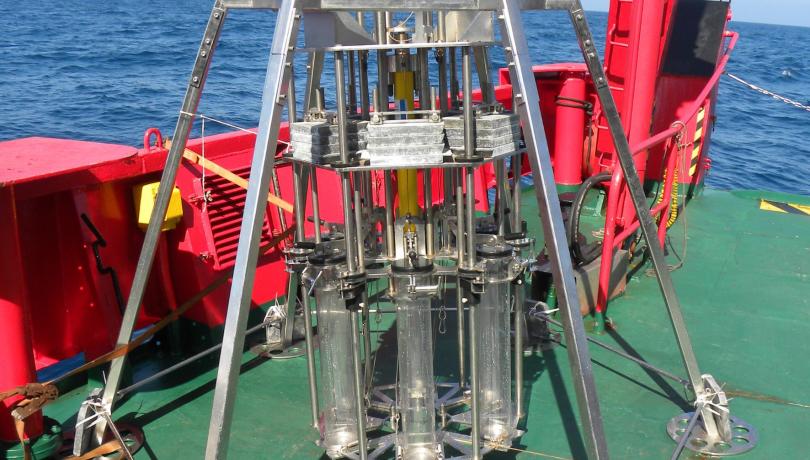This is the main conclusion of a study, conducted in collaboration with the ICM-CSIC, reconstructing the recent history of some marine pollutants in deep sediments of the Mediterranean and the Cantabrian Sea.

Research led by the Spanish Institute of Oceanography (IEO-CSIC) together with the Autonomous University of Barcelona and the Institute of Marine Sciences (ICM-CSIC) has reconstructed the history of pollution in the seabeds of the Cantabrian Sea and the northwestern Mediterranean over the last centuries.
To carry out this study, published in the journal Science of the Total Environment, sediment cores obtained at depths between 80 and 1150 meters were analyzed, their different layers were dated, and the present pollutants were studied—metals such as mercury or lead, as well as microplastics.
The results obtained show how human activity—such as industrialization, dam construction, and plastic production—has left a persistent footprint even in the deepest environments far from the coast.
Through the analysis of metal levels, it has been possible to identify the imprint of different activities related to the industrial revolution.
“The use of steam engines, which used coal as fuel, led to an increase in arsenic levels in the sediment,” points out Juan Santos, researcher at the Oceanographic Center of Vigo of the IEO and first author of the study. Later, an increase in levels of metals such as mercury or lead is detected, which indicates the development of industrial activity in Spain.
The fact that these signs of industrial activity are found even in deep-sea sediments far from the coast reminds us that even these deep marine ecosystems are not immune to our actions, warns Joan Cartes, researcher at the ICM-CSIC.
“We need to assess the extent to which this impact has affected marine fauna in these systems, the ultimate goal of the RECOMARES project, which helped develop these findings.”
Another human activity that has been recorded in the sediment is the construction of dams. From the 1960s onwards, a decrease in the presence of natural elements such as lithium and aluminum is observed, which would be related to lower river discharge due to the damming of rivers, along with changes in rainfall patterns and massive coastal occupation through various constructions.
The sediments analyzed also show the beginning of plastic use, which begins to appear in layers deposited in the mid-20th century.
“The history of microplastic pollution is well recorded in these sediments, probably because their appearance in everyday use and industry was faster and more widespread than that of most metals,” the authors state.
The study has also made it possible to identify, in some areas, the use of bottom trawling. The use of this type of net stirs up the sediment and generates discontinuities in the record of indicators such as the decay of radioactive lead, a variable used to date the sediments.
This study was carried out within the framework of the RECOMARES project (RTI2018-094066-B-I00), which is funded by the Ministry of Science, Innovation, and Universities.